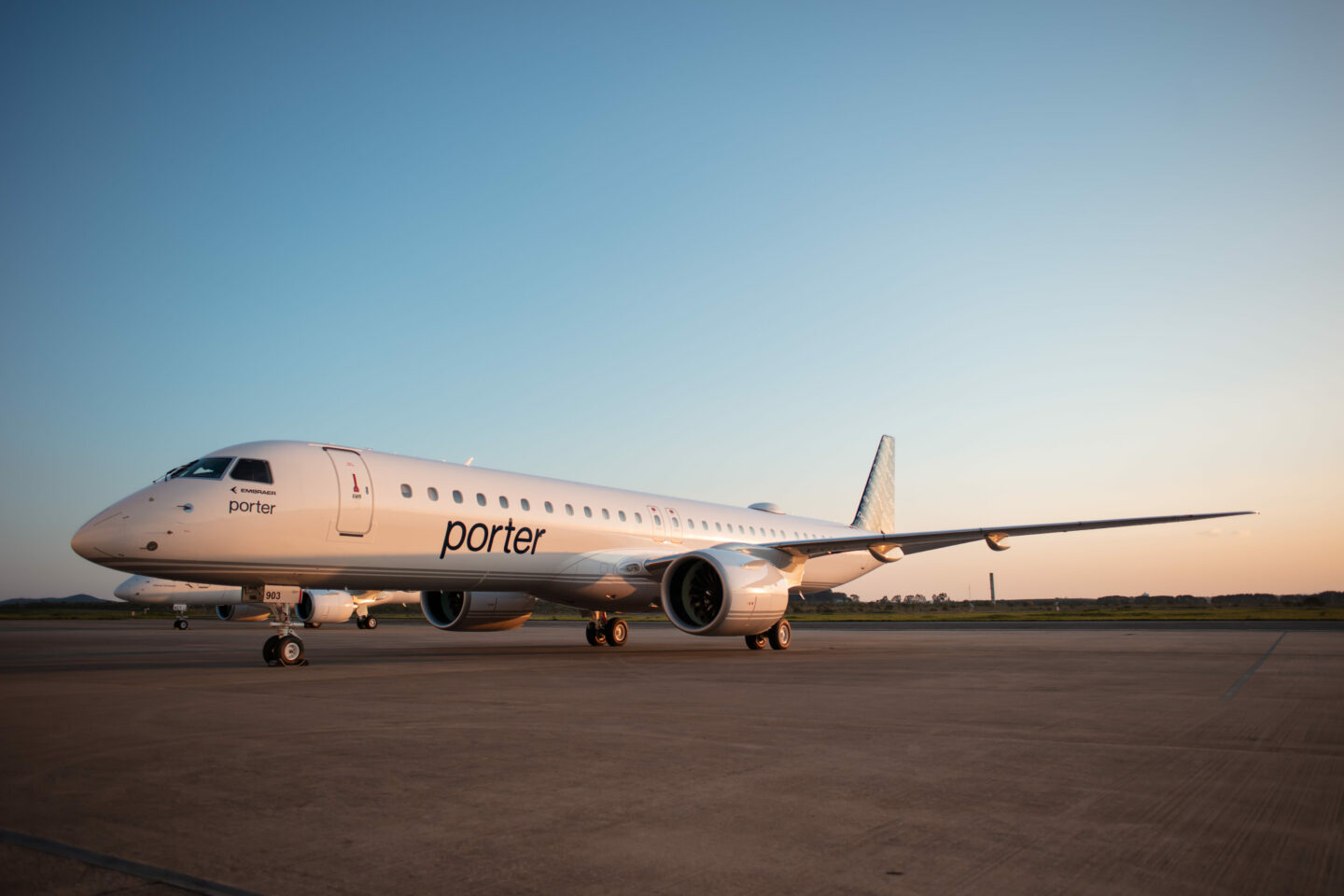
Porter Airlines is the first North American airline to operate the Embraer E195-E2.
Photo: Porter Airlines
Written for The Air Current, with Courtney Miller
Porter Airlines has officially entered the jet era, launching its first jet flights with Embraer’s E195-E2 – the first North American airline operations for the plane. Departing Toronto’s Pearson airport on February 1, the 132-seat aircraft made its way to Ottawa, touching down in the nation’s capital at 8:11 in the morning.
While the Embraer was scheduled to depart at 6:55 am, a less celebrated Porter flight was already en-route between the two cities. Porter flight 2205 departed Toronto’s Billy Bishop Toronto City Airport at 6:45 am and was descending into Ottawa by the time the new E195-E2 pushed back from the gate at Pearson. The De Havilland Canada (née Bombardier) Dash 8-400 aircraft, long the mainstay of the Porter fleet since the airline’s start in 2006, would complete the flight in 37 minutes before quietly taxiing around the arriving Embraer jet to return to Toronto’s downtown airport.
Aside from the recognizable blue and white of Porter’s livery, the two aircraft shared very little in common. Having arrived from the same city yet different airports, the two Porter flights could have been from separate airlines, both competing for the Toronto to Ottawa passenger.
In effect, Porter Airlines is now two airlines – a 29-turboprop airline well-established at Toronto’s downtown airport – and a startup committed to 50 new jet aircraft and disconnected from the fortress hub by at least a 30-minute cab ride. It is from this context of Porter’s bifurcation that TAC Analysis assesses the airline, both as an incumbent and as a pure startup. Just as importantly, we look at the close bonds between Porter and Embraer and how much of the Brazilian manufacturer’s future is based on the success of the new/old venture.